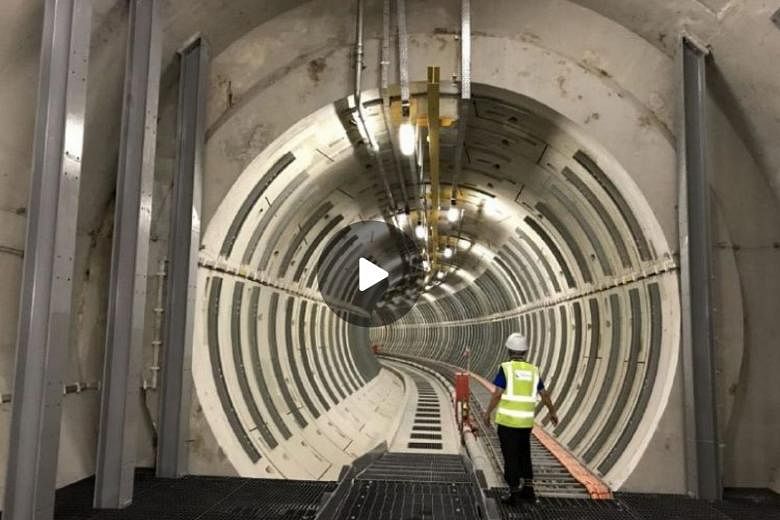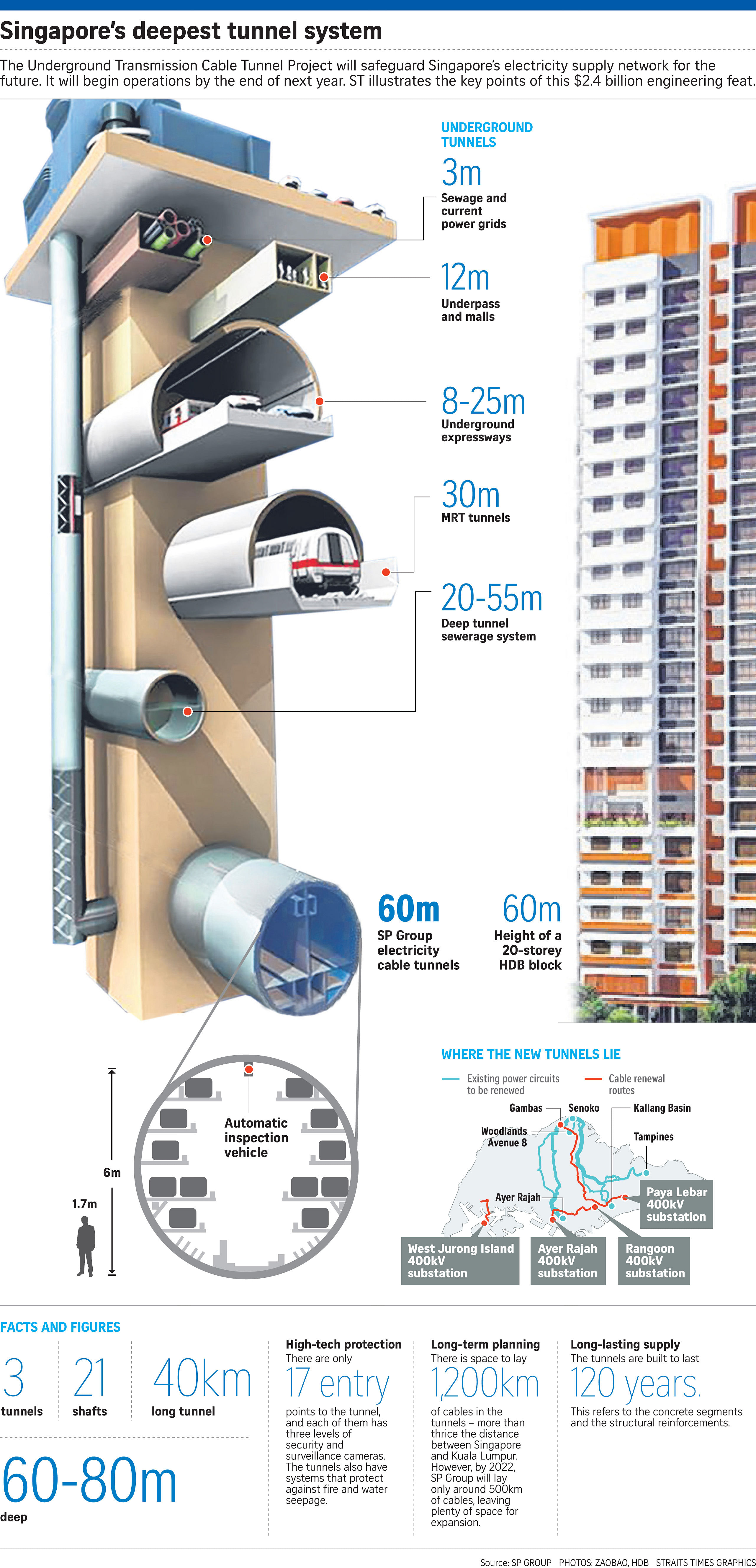SINGAPORE - Singapore's new electricity supply tunnels have the latest high-tech sensors to detect water seepage, fires and infiltration that could harm the electricity network.
Robots, or automatic inspection vehicles (AIVs), traversing the length of the 40km tunnels, will look out for changes in the colour of the concrete walls, a warning sign for water leaks.
SP Group managing director of infrastructure and projects Michael Chin said on Tuesday (Dec 19) that water leaks are the most common problem in tunnels, and AIVs can detect concrete patches that suddenly turn a different colour.
He said the AIVs will also eventually be able to detect fires using infrared cameras.
Each of the three tunnels also has a firefighting system that uses a superior "water mist system", instead of sprinklers, said Mr Chin.
He explained that the system shoots very fine water mist which evaporates faster and removes heat quickly from fire. The water mist also displaces air and suffocate the flames.
Smoke particles will dissolve into the fine water droplets and sink, therefore leaving a fine mist that is safe for personnel to breathe when they go down to inspect the aftermath of the fire, said Mr Chin.
The system also sends an alarm signal to the Singapore Civil Defence Force.
Another set of sensors in the tunnels can detect pollutants and abnormal concentrations of gases.
Most parts of the multibillion-dollar Underground Transmission Cable Tunnel Project are about 60m beneath the earth, but some will be at 80m, making the electricity project one of the world's deepest.
The tunnels - named the North-South, East-West and Jurong Island-Pioneer tunnels - will be able to house 1,200km of extra-high voltage cables. Singaporeans will begin tapping into this source from next year, said energy utility company SP Group on Tuesday (Dec 19).
About 500km of cables will be laid, which is less than half the capacity of the tunnels.
There will be 17 equipment buildings spanning the 40km network, and each of them will have two electrical bicycles to allow staff to quickly move to parts of the tunnels that require attention.
Mr Chin said that anyone trying to enter the tunnels will need to break through three layers of security at the equipment buildings.
"All these systems protect the cables and the people working in the tunnel, and so in the long run maintains the reliability of the system," he said.




